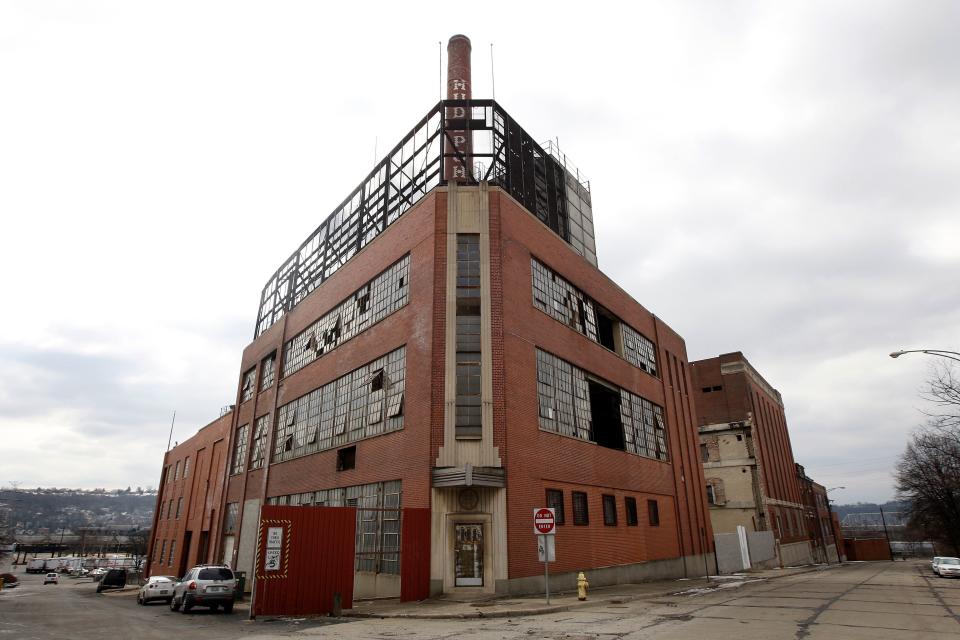EPA has banned asbestos. You may still want to check your home for it
In March, the U.S. Environmental Protection Agency banned the most common form of asbestos, a cancer-causing substance associated with tens of thousands of deaths in the country every year.
The ban took years, arriving after what the EPA called “three decades of inadequate protections.” By banning chrysotile, the last form of asbestos still in use within the country, the U.S. finally joins more than 50 other countries that have already prohibited it.
However, because asbestos was used in construction for decades, it still exists in many houses, schools and commercial buildings throughout the country – including in the Greater Cincinnati area.
Here’s what you need to know.
What is asbestos?
Asbestos is a mineral fiber that can be found in rock and soil. Before the 1970s, asbestos was used widely in construction and the automobile industry because of its strength and heat-resistant properties.
Due to health concerns, mining of asbestos stopped in 2002. But the United States continued to import the mineral to help create products such as roofing materials, vinyl tile and cement pipes.
Is asbestos toxic?
Yes. Asbestos is a known carcinogen, or cancer-causing agent. Breathing in high levels of asbestos causes cancers such as lung cancer and mesothelioma.
Workers in industries where asbestos was used, particularly before the 1970s, are most likely to develop asbestos-related health issues. Prolonged exposure to airborne asbestos fibers and dust can lead to a lung disease called asbestosis, which causes thickening and scarring of the lungs, resulting in difficulty breathing.
However, everyone has been exposed to relatively low levels of asbestos due to widespread human use and most people do not develop health problems as a result, according to the U.S. Consumer Product Safety Commission.
Hamilton County has a lower asbestos-related death rate of 4.4 deaths per 100,000 residents compared to nationwide and state averages, according to federal data analyzed by EWG Action Fund, an environmental lobbying organization.
The highest rates of asbestos-related deaths in Ohio are concentrated in the southeast region. Jefferson County, located on the border of Ohio and West Virginia, has the state’s highest asbestos-related death rate, with 20.3 deaths per 100,000 people.
Is there asbestos in Cincinnati?
Yes, there is asbestos in Cincinnati. “It's common,” said Jamie Davis, vice president of EnviroWorx Services, a contractor certified to perform asbestos abatement in Ohio. “It’s in most commercial buildings built prior to 1980.”
At least five commercial sites in Cincinnati are either undergoing or have completed asbestos abatement, the safe removal, repair or encapsulation of asbestos materials in a building.
These sites include downtown locations such as Carew Tower, as well the site that is now the Samuel Adams Brewery in the West End. With the help of federal and state grants, the city of Cincinnati aims to revitalize these sites, two of which have been cleaned up and converted to apartments.

How do I know if there’s asbestos in my home?
You can’t tell whether something contains asbestos by looking at it. To properly identify asbestos, it must be tested in a laboratory, according to the Cincinnati Health Department.
Asbestos was commonly used in building materials such as tiles, floor glue, plaster, insulation, siding, roofing and pipe wrap, so houses built before 1990 may contain it.
“If it is a material installed prior to 1990, assume it is an asbestos containing material,” the Health Department website states.
Cincinnati has some of the oldest houses in the country, with a federal report from the 1990s finding that 95% of Cincinnati's housing units had been built before 1980.
Should I remove the asbestos in my home?
Having asbestos in your home isn’t considered dangerous. The health hazard arises when the material containing asbestos becomes damaged or degrades over time, releasing fibers into the air.
“Usually the best thing is to leave asbestos material that is in good condition alone,” reads guidance from the U.S. Consumer Product Safety Commission. If the material in good condition it's unlikely to release asbestos fibers.
However, if you live in an old home with loose, crumbling or damaged building materials, the U.S. Consumer Product Safety Commission recommends hiring a certified asbestos contractor to handle removal or encapsulation.
It’s also wise to have a professional check for asbestos before starting any home renovation. Professionals can collect samples safely and send them to a lab for testing.
It’s not recommended to take asbestos samples yourself, as improper handling can be hazardous.
How much does an asbestos inspection cost?
The inspection ranges between $700 to $1,500 based on the size of the home, according to Davis.
He recommends hiring a separate contractor for the inspection and for the removal to prevent conflict of interest. “That inspection should always be performed by a separate party than the contractor doing the work,” Davis said.
I have more questions. Who can I call?
For home or business-related asbestos inquiries, contact Ken Wilkins at 513-946-7743 or Dawn Mays at 513-946-7758. Both work at Hamilton County Environmental Services.
To find out if your child’s school contains asbestos and learn about their maintenance procedures, contact the school directly.
This article originally appeared on Cincinnati Enquirer: Cancer-causing asbestos remains in Cincinnati buildings despite federal ban

